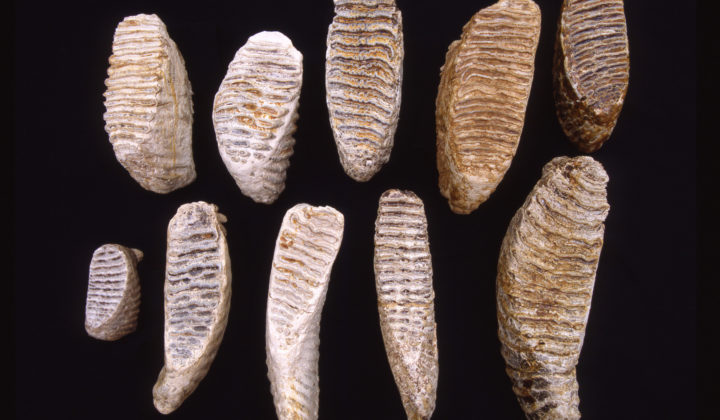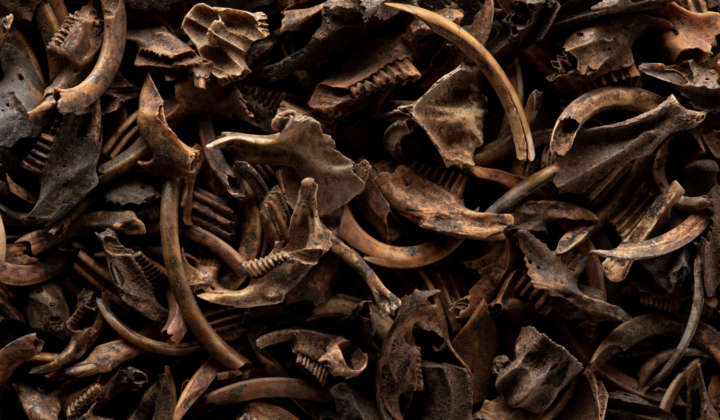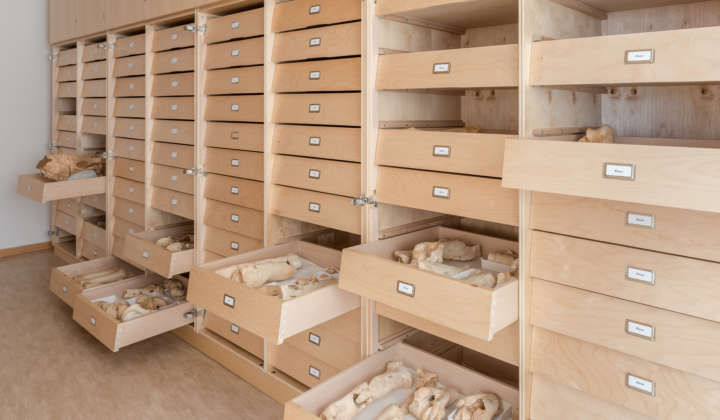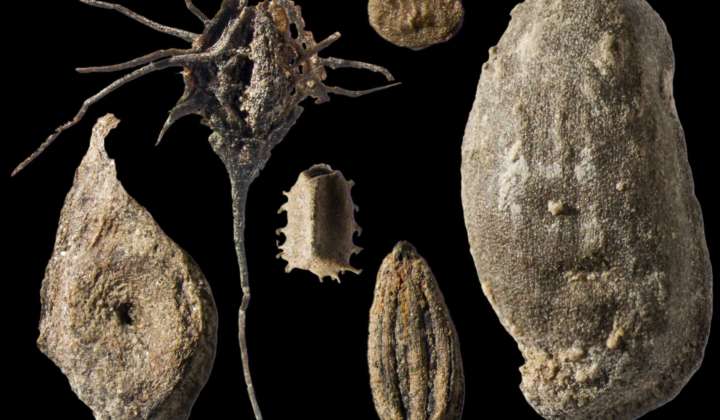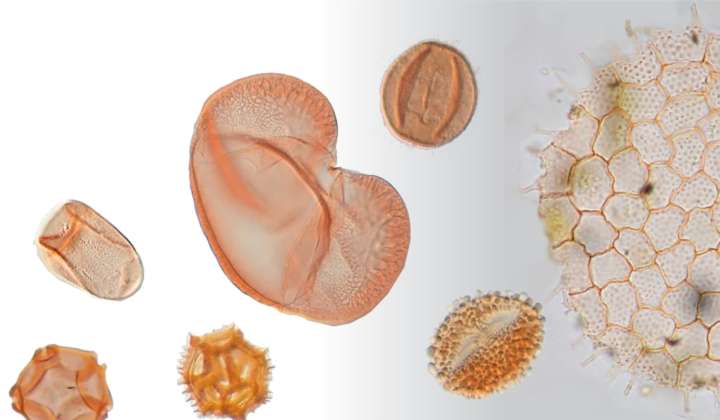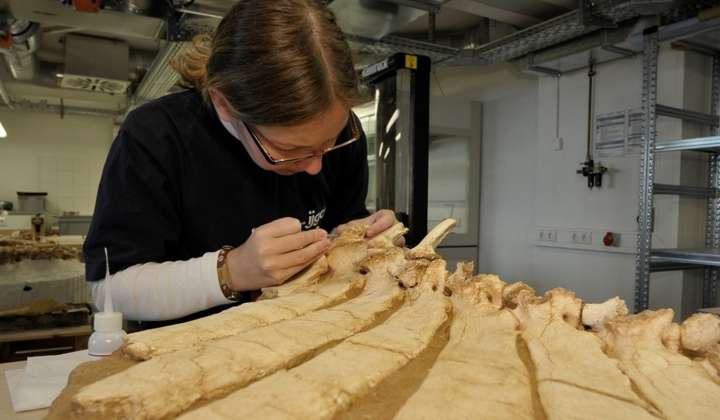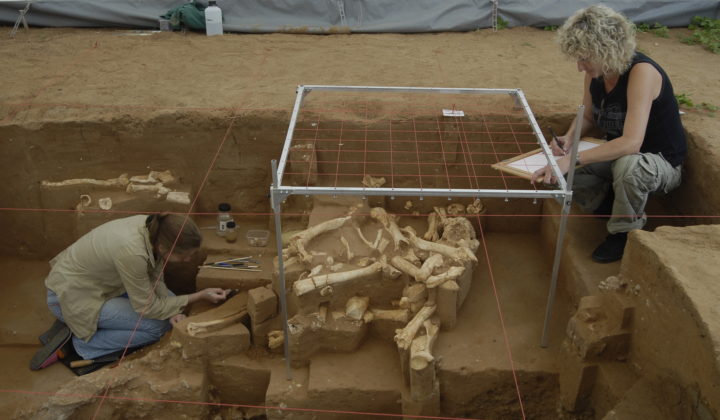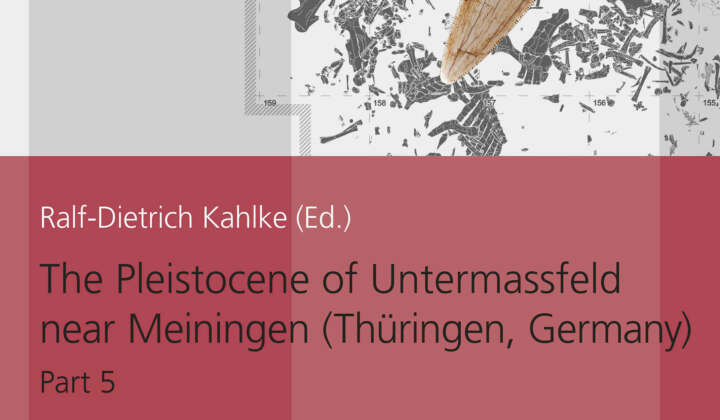Senckenberg Research Institute and Natural History Museum Frankfurt/M.
Quaternary Palaeontology
Weimar
The Research Station of Quaternary Palaeontology Weimar is a scientific location and collection site of the Senckenberg – Leibniz Institution for Biodiversity and Earth System Research (SGN) and a division of the Senckenberg Research Institute and Natural History Museum Frankfurt/M. The scientific focus is on the evolutionary history of animal and plant communities and the reconstruction of palaeoecosystems and environmental conditions that existed during the global climatic variability of the Quaternary Ice Age (a period spanning the past 2.6 million years).
The cyclical changes in the climate system caused profound changes in the Earth’s surface and living conditions, which manifested themselves in evolutionary steps, adaptation and migration processes, local and regional extinction events and changes in faunal and floral communities. At the same time, significant steps in human development and radiation took place, including the emergence and development of human cultures. A look at the history of the earth before anthropogenic influence forms the basis for understanding the causes and effects of naturally occurring processes in the geosphere and biosphere, particularly in relation to the climate system. Based on palaeoecological data in particular, it is ultimately possible to estimate the anthropogenic contribution to current climate and biodiversity change and to validate modelling scenarios.
The research takes place under the following sections – Quaternary large mammals, Quaternary small mammals, Quaternary macrofloras, and Quaternary microfloras – in collaboration with international research groups. Borehole investigations and expeditions are providing a wealth of new fossils and data. The analysis of Quaternary floras and faunas provides a basis for correlating sites and establishing links between climatic variability, regional and transregional biodiversity.
Within the Senckenberg research program, the scientific work of the Research Station of Quaternary Palaeontology Weimar focuses on the research fields Biodiversity and Climate as well as Biodiversity and Earth System Dynamics. The individual projects focus on the interactions between climate, earth surface processes and ecosystems on different geological time scales. The interdisciplinary projects are also closely linked to university and non-university research institutions in Germany and abroad.
History
Thuringia came to prominence in the scientific world because of a scientific dispute in 1696-1704 between W. E. Tentzel and the Collegium medicum in Gotha. Large bones from the Pleistocene travertines of Burgtonna were correctly identified by Tentzel as those of a fossil elephant. He defended vehemently his opinion against interpretations as “games of nature” common at this time. During the 19th century the first important fossil collections were assembled at Weimar, mainly comprising finds from the fossil sites in the immediate vicinity of the town, such as Süßenborn, Weimar (Belvederer Allee), Taubach and Ehringsdorf. The description of these finds was undertaken by such well known palaeontologists, as von Fritsch, Pohlig, Weiss, Wiegers, Wüst, and Soergel.

